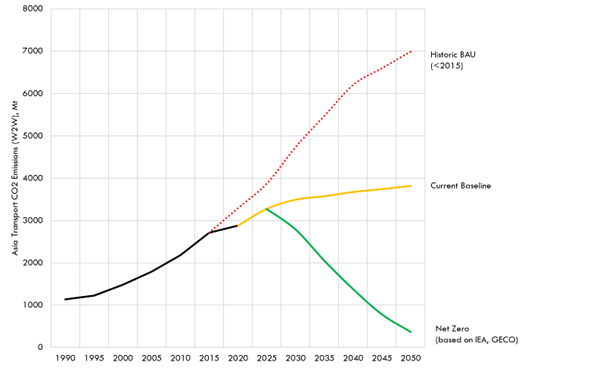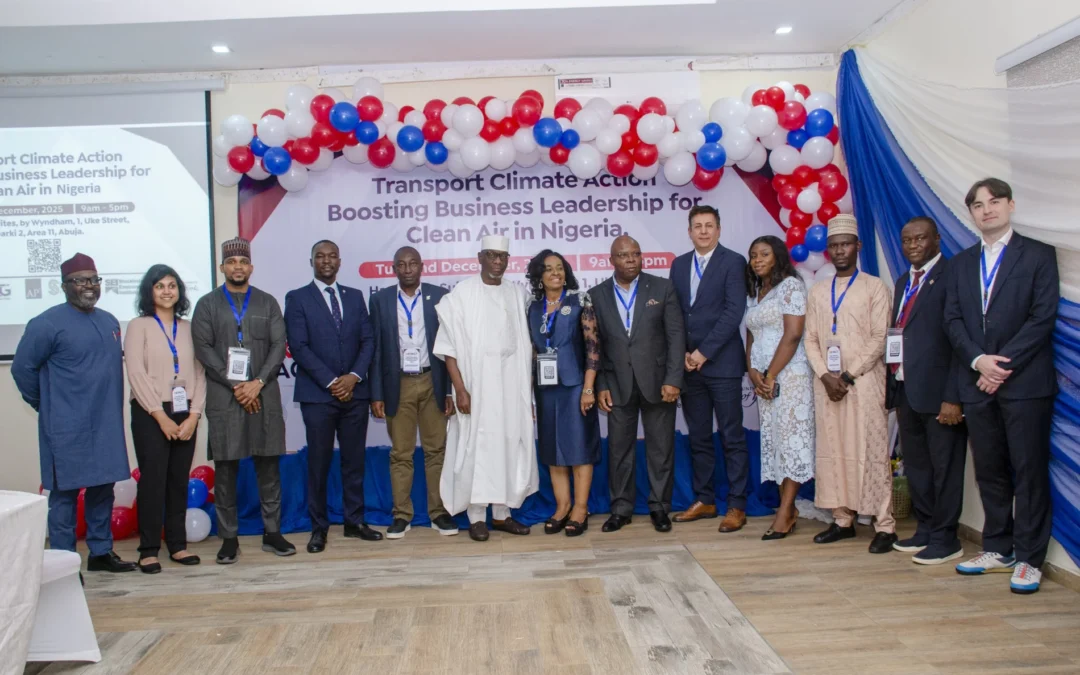By Jamie Leather, Chief of Transport Sector Group, Asian Development Bank
For many years, the alarming rise in CO2 emissions from the transport sector has posed a significant threat to the planet, with Asia-Pacific bearing the brunt of this challenge. Transport in the region was on the wrong path. Since 2010, the region has accounted for a staggering two-thirds of the worldwide surge in transport-related CO2 emissions. However, amidst these concerning trends, a new path is being set, and the rate of increase in CO2 emissions is declining. Between 2011-2015, the carbon emissions from the transport sector in Asia and Pacific was growing at 4% per annum, the fastest growing sector. However, since 2015 the transport sector’s carbon emissions grew only at 1% per annum on average and ranked only 5th (out of 8 sectors) in terms of carbon emissions in the period.
In light of this, transport is also decoupling GDP growth from CO2 emissions. In 2022, there was a 3% reduction in carbon dioxide emissions from the transport sector compared to 2018. Concurrently, emissions from various other sectors in low- and middle-income countries increased. By 2022, Asian countries exhibited differing degrees of decoupling their GDP from emissions, with high-income economies achieving absolute decoupling, while middle-income and low-income economies saw relative decoupling.
There is a growing emphasis on the climate and energy nexus in transport policy documents in Asia. Considering that the region lacks a proportional share of infrastructure access and connectivity, the interest in infrastructure, especially multi-modal transport policy measures, is growing. When compared with nationally determined contributions (NDC) and long-term strategies (LTS), transport policy documents not only provide a higher number of climate mitigation measures but, more importantly, policy measures that link SDG related “sustainability” measures with the low carbon measures associated with the Paris Agreement. A more diverse mix of solutions is being promoted that also aim to improve access, connectivity and employment while reducing externalities such as air pollution, road crash fatalities in addition to carbon emissions.
A pivotal moment is also underway in the electric vehicle (EV) landscape, as a tipping point is being reached. Certain vehicle types have now positioned themselves where the capital expenditure (CAPEX) and operational expenditure (OPEX) of EVs present a more favorable proposition compared to internal combustion engine (ICE) vehicles.Light vehicles such as 2- and 3-wheelers have lower CAPEX due to weight and thus battery costs, while high use urban vehicles such as buses and taxis have relatively lower OPEX. In both cases, the lifecycle tipping point has been reached for e-vehicles, marking a transformative shift where the economic scales decisively lean in favor of electric mobility over traditional counterparts.
Nonetheless, one crucial area that demands greater attention is climate-resilient infrastructure. While efforts are being made to mitigate carbon emissions, the vulnerability of transport infrastructure to climate-related events is often overlooked. Despite only having 35% of the world’s surface transport infrastructure, Asia-Pacific’s share in potential multi-hazard damages is about 54% of the global total. Small island developing states are most vulnerable with infrastructure investments and potential damages costing higher proportions of their GDP. Compared to climate mitigation, climate resilience in the transport sector is not yet a significant policy priority. However, based on a survey of policies from 15 economies across Asia and the Pacific, trends show that over the last few years, transport climate resilience is increasingly being integrated into transport-related policies that cut across modes and sub-sectors.
The future of transport sector related emissions is getting brighter. Until recently, it was believed that unrestrained growth in mobility could lead to transport CO2 emissions in Asia increasing from about 2.9 Gt to about 7 Gt in 2050. Following the adoption of the Paris Agreement in 2015, we have seen a change in transport emission trendlines and a new scenario is emerging, with a reference scenario of just below 4Gt by 2050 for Asia transport sector related emissions. While this is an improvement over earlier scenarios, it still falls well short of what is considered necessary to be compliant with the objective of the Paris Agreement to keep temperature increases to well below 2°C above pre-industrial levels and pursue efforts to limit the temperature increase to 1.5°C above pre-industrial levels. The current consensus is that with such a target transport CO2 emission by 2050 would need to be somewhere between 0.3 to 1Gt.

While progress is evident, there is a collective acknowledgement that meeting the agreement’s objectives requires more concerted and ambitious efforts. As we navigate this critical juncture, it is imperative to intensify our commitment to sustainable, low carbon transport and mobility solutions to ensure a better future for the people and the planet.

Jamie Leather
Jamie Leather is the Chief of the Transport Sector Group at the Asian Development Bank. Mr. Leather has 30 years of experience in transport, working internationally with development organizations, governments, private sector and research institutions. Mr. Leather leads ADBs transport sector operations and oversees the strategic direction of ADBs knowledge, technical and financial support to its developing member countries, private sector clients, and partners. Mr. Leather obtained his Master of Science in transport planning and engineering from the Institute of Transport Studies, Leeds University (UK).





















